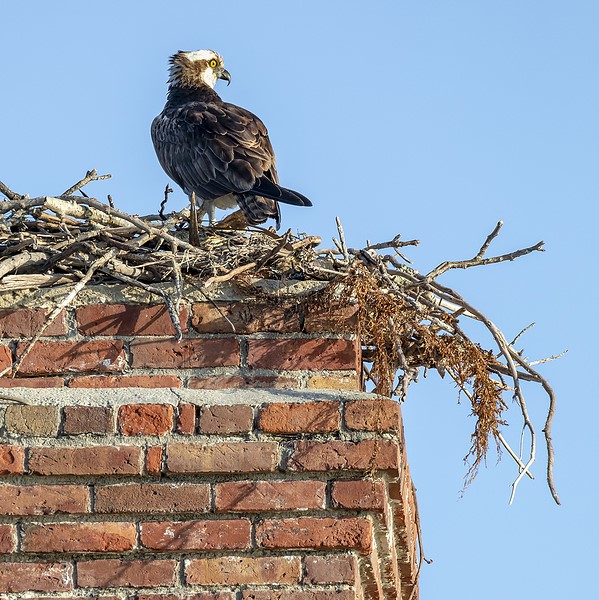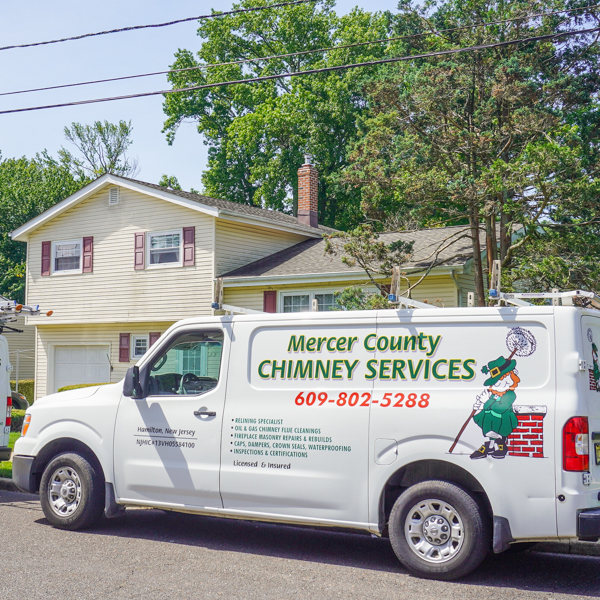Five Fireplace Problems That Affect Performance
Fireplaces bring warmth, enjoyment, and ambiance to your home. However, some issues make using them such a bad experience; it’s easy to say, “The heck with it!” and use the furnace instead. Here are some common issues that affect performance and what you can do about it.

Chimney Obstructions
Many things cause chimney blockage, but the main culprits are animals, like birds and squirrels that build their nests inside the flue. Another common cause of chimney obstruction is debris like twigs and leaves from overhanging trees. When there’s a blockage in the flue liner, it prevents smoke from going up to the outside, which sometimes results in back puffing or smoke coming back into the house. Obstructed flues also put you at risk for toxic fumes and carbon monoxide. Chimneys with a cap can be blocked as debris can build up around it and restrict airflow.
Creosote Buildup
The smoke coming from burning wood in your fireplace deposits a tar-like substance called creosote on the walls of the flue’s lining. Over time, creosote thickens along the chimney walls, restricting airflow and causing smoke to come back into the house. Creosote is also highly flammable and can easily ignite if it gets too hot, causing a chimney fire. According to the Chimney Safety Institute of America, creosote buildup is the number one cause of chimney fires.
Draft & Flow
Your fireplace must have a good draft and flow for your fireplace to work effectively. The draft is the pressure that causes the gases to go up the chimney and bring oxygen into the system. Flow is the volume of gases passing through the system created by the draft. Draft and flow must work in tandem to keep your fire burning and ensure the smoke and byproducts go up the chimney and out of the house. Two factors essential to effective draft are the temperature difference between the gas inside the flue, the air outside, and the chimney’s height.
For adequate flow, three factors are essential: the draft, flow resistance, and the size of the venting passageway. Now, various issues affect your draft and flow, including dynamic wind load or DWL. DWL happens when the wind blows on one side of the house, creating negative pressure on the opposite side. This negative pressure creates a vacuum, which usually sucks the air from the chimney, and the smoke comes with it. Another cause of draft problems is using fans in the house, which can overcome the natural draft that allows your fireplace to work effectively. Lastly, air flowing down into the chimney also creates draft problems.
Closed Damper
The damper is crucial to your fireplace’s effective operation by keeping heat inside when there’s no fire burning. However, many people forget to open the damper when using their fireplace, causing smoke to waft back into the house. People think the damper is open in other instances, but it’s not because of damage or obstruction from hardened soot.
Low-Quality Firewood
When you start a fire and have difficulty getting the wood to burn evenly, it could be the wood that’s the problem. Seasoned firewood works best because fresh wood typically has too much moisture, which impedes combustion, and leads to a weak fire. A weak fire won’t give you the heat you want and produces more smoke and creosote than seasoned firewood.
How to Improve Your Chimney & Fireplace Performance
If you have a fireplace, you want it to perform efficiently and give your home warmth and ambiance. Now that you know the common problems that cause your fireplace and chimney to be less effective, here are a few tips to increase performance and efficiency.
- Use Better Wood
- As mentioned above, using the right fuel to make your fire is the most crucial step in an efficient fireplace. Experts recommend using seasoned or dry wood because it burns hotter and more thoroughly without creating as much smoke as wet wood. Also, when seasoned firewood burns, it produces fewer byproducts like creosote, which, as we’ve seen, can wreak havoc in your chimney if it builds up.
- Consider Installing Tempered Glass Doors
- Many fireplaces come with glass doors designed to prevent a draft from getting into the house when the fireplace isn’t in use. However, the doors shouldn’t be closed when using the fireplace because the heat can cause them to crack. Some manufacturers design tempered glass doors to regulate airflow to your fireplace to make it more efficient.
- Add an Insert
- If you have a wood-burning fireplace, consider adding a certified insert, which some estimates say can increase your fireplace’s efficiency by 80%.
- Call a Chimney Sweep
- By far, the best way to keep your fireplace and chimney in top condition is to hire a certified chimney sweep for annual cleaning, inspection, and maintenance. Hiring a professional chimney sweep ensures your chimney and fireplace work safely and efficiently to give you the warm fire you want with the least amount of hassle. Also, annual chimney inspection and maintenance protects your chimney against creosote buildup and the risk of a chimney fire.

About Us
Mercer County Chimney Service is located in Hamilton, NJ. Our technicians are fully licensed and insured, which means you can trust us to provide the very best in fireplace and chimney repair, maintenance, and cleaning. We want to be your go-to chimney repair service and here’s just a sample of what we can do for you.
- Chimney and fireplace sweeping
- Chimney and fireplace inspections
- Chimney and fireplace tuckpointing and masonry repair
- Chimney cap and damper repair and installation
- Chimney odor elimination
- Air duct cleaning
- Gas fireplace installation
- Dryer vent cleaning
- And more!
To ensure your fireplace and chimney run smoothly and safely year after year, call one of our certified professionals today at 609-802-5288 or fill out our online form.



